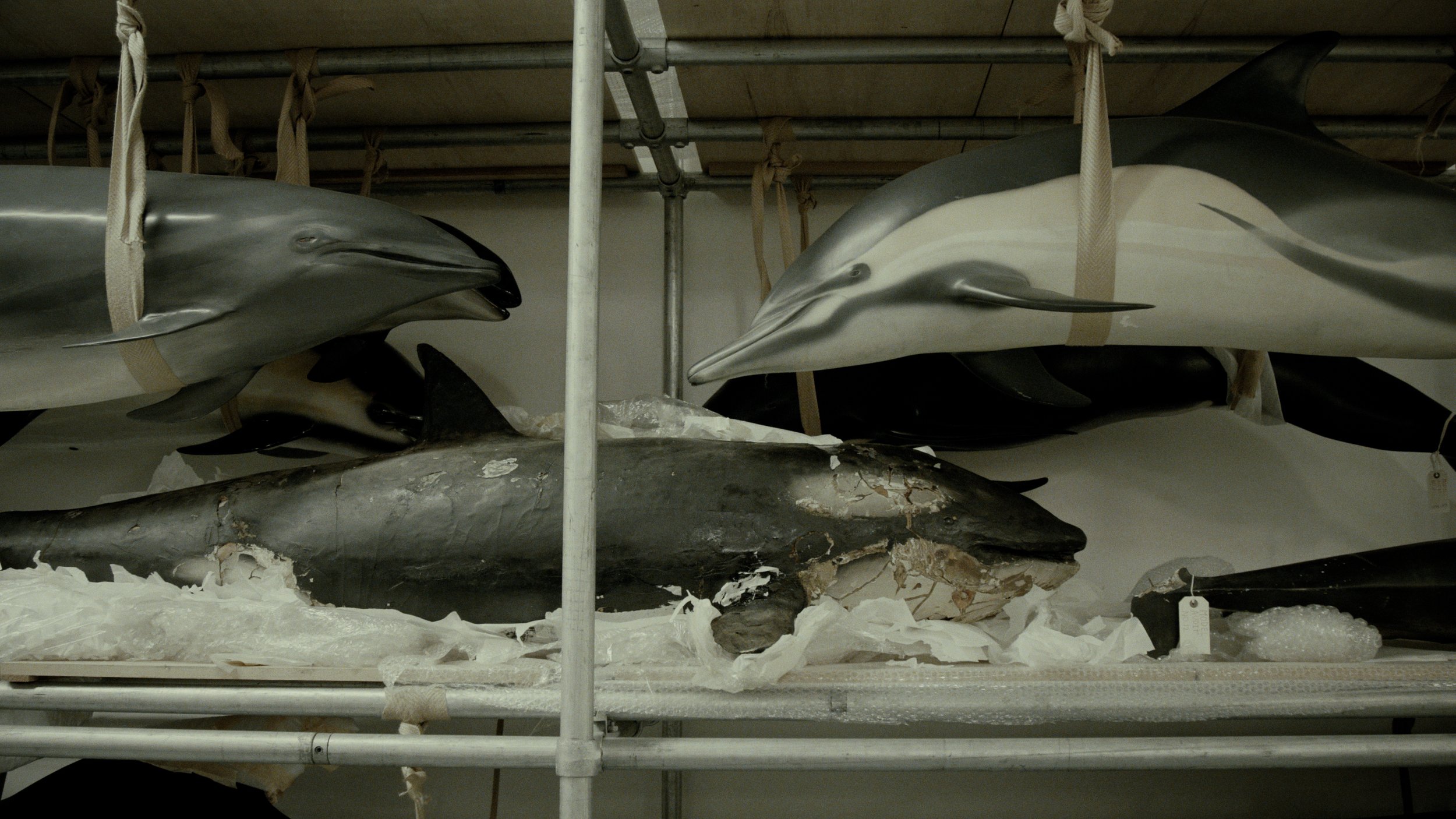Worlds Held in Waxy Time:
Sam Williams in conversation with Richard Sabin
Saturday 4 March, 2pm
Free + Optional donation
As part of the public programme for Deep in The Eye and The Belly (Part One), artist Sam Williams will be in conversation with Richard Sabin, Principal Curator of Mammals at the Natural History Museum, London.
Richard was a key collaborator in the research for the project and appears as the guide in the vast collection of cetacean objects that appear in the film. For this discussion, they will focus on one artefact in particular, the wax-tubes recovered from the ear canals of cetaceans. For Richard, they represent rich records of a whale's history in that they contain information on the animal's health, history and environment. For Sam, they came to represent the idea of waxy time capsules and bodily archives that tell stories of climate collapse and possible futures.
Richard Sabin is Principal Curator of Mammals at the Natural History Museum (NHM), London, where he has worked for the past 30 years. With his curatorial work primarily focused on the study of marine mammals using the Natural History Museum’s world-class research collections, Richard is collaborating with colleagues from around the world to generate new scientific data from old Museum specimens. He is currently exploring historical contaminants and stress levels in baleen whales using wax earplugs and sperm whale population structure using teeth.
He supports wildlife conservation, UK and international law enforcement through his endangered species identification work and is NHM advisor to the UK Cetacean Strandings Investigation Programme.
Richard was scientific lead for the redisplay of ‘Hope’, the NHM’s iconic blue whale specimen, spending time in the Pacific to study blue whale feeding behaviour and translating his observations into the dramatic lunge-feeding pose Hope’s skeleton now displays in the NHM’s Hintze Hall. He was also scientific lead for the NHM temporary exhibition ‘Whales: Beneath the Surface’ (2017-18), which explored the origins, adaptations, behaviour and culture of cetaceans. He has published scientific papers in a wide variety of key journals and has written books and chapters in edited works for non-specialist audiences.
He works closely with the arts and humanities to help develop new perspectives and explore ‘hidden’ histories of collections and is dedicated to expanding and diversifying museum audiences.

